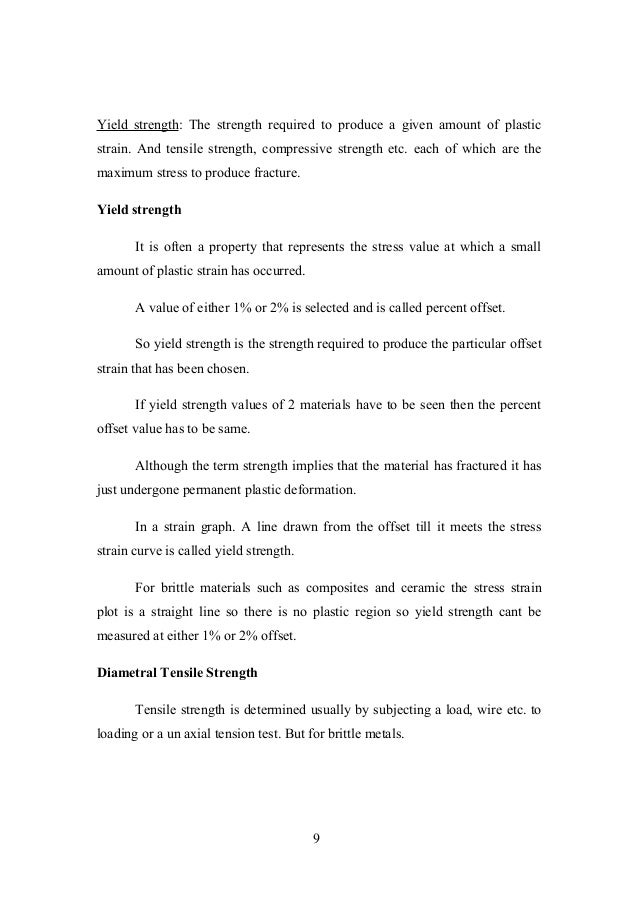An appreciable reduction in fracture resistance was measured for most of.
Tensile properties of ceramics testing.
The tensile strength of ceramics and glasses is low because the existing flaws internal or surface cracks act as stress concentrators.
Very popular tests of ceramics are the various hardness tests for example vickers hardness test which is not only a cost saving test but also requires shorter times since no specific specimen preparation except of a smooth often polished surface is required.
Ceramics at high.
Why do ceramics have high compressive strength.
Testing the tensile properties of ceramic matrix composites.
Tensile tests of brittle ceramics are usually not performed.
Tensile test related parameters are evaluated.
Six different cmcs were tensile tested at room temperature rt and 1 000 c.
Ceramics have compressive strengths about ten times higher than their tensile strength.
Usually ceramic strength is tested using a four point bend test.
In addition test specimen fabrication methods testing modes force displacement or strain control testing rates force.
This test method addresses but is not restricted to various suggested test specimen geometries as listed in the appendixes.
Uniaxial tensile stress rupture testing of hot pressed silicon nitride nc 132 was carried out at 1000 1200 and 1300 c in air at various applied stress levels and the corresponding times to.
Ceramics resist high temperatures because.
This article reports the development of a mechanical testing methodology including fixtures extensometry temperature control and calibration and procedure including control mode options and analysis for ceramic matrix composites cmcs.
1 1 this test method covers the determination of tensile strength under uniaxial loading of monolithic advanced ceramics at ambient temperatures.

